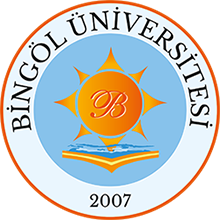Orientation-controlled synthesis and characterization of Bi 2Te3 nanofilms, and nanowires via electrochemical co-deposition
Abstract
An electrochemical deposition technique based on co-deposition was used to deposit preferentially oriented Bi2Te3 nanostructures (nanofilm, and nanowire). The shared underpotential deposition (UPD) potentials for both Bi and Te co-deposition were determined by cyclic voltammetric measurements. The scanning probe microscopy (scanning tunneling microscopy (STM) and atomic force microscopy (AFM)) and the X-ray diffraction (XRD) data indicated that the electrodeposition of Bi2Te3 results in nanofilm-structured deposits with a preferential orientation at (0 1 5) and nanowired-structured deposits with a preferential orientation at (1 1 0) in acidic and basic (in the presence of ethylenediaminetetraacetic acid (EDTA)) medium, respectively. The results show that the nucleation and growth mechanism follows 3D mode in acidic solutions and 2D mode in basic solution containing EDTA additive. The optical characterization performed by reflection absorption Fourier transform infrared (RA-FTIR) spectroscopy showed that the band gap energy of Bi2Te3 nanostructures depends on the thickness, size, and shape of the nanostructures and the band gap increases as the deposition time decreases. Moreover, the quantum confinement is strengthened in the wire-like deposits relative to the film-like deposits. Energy dispersive X-ray spectroscopy (EDS) analysis demonstrated that Bi2Te3 nanostructures were always in 2:3 stoichiometry, and they were made up of only pure Bi and Te. © 2010 Elsevier Ltd.
URI
https://www.scopus.com/inward/record.uri?eid=2-s2.0-79551535612&doi=10.1016%2fj.electacta.2010.12.012&partnerID=40&md5=91db7e8172cd68b9846852f6d5ddd586http://acikerisim.bingol.edu.tr/handle/20.500.12898/5041
Collections

DSpace@BİNGÖL by Bingöl University Institutional Repository is licensed under a Creative Commons Attribution-NonCommercial-NoDerivs 4.0 Unported License..













